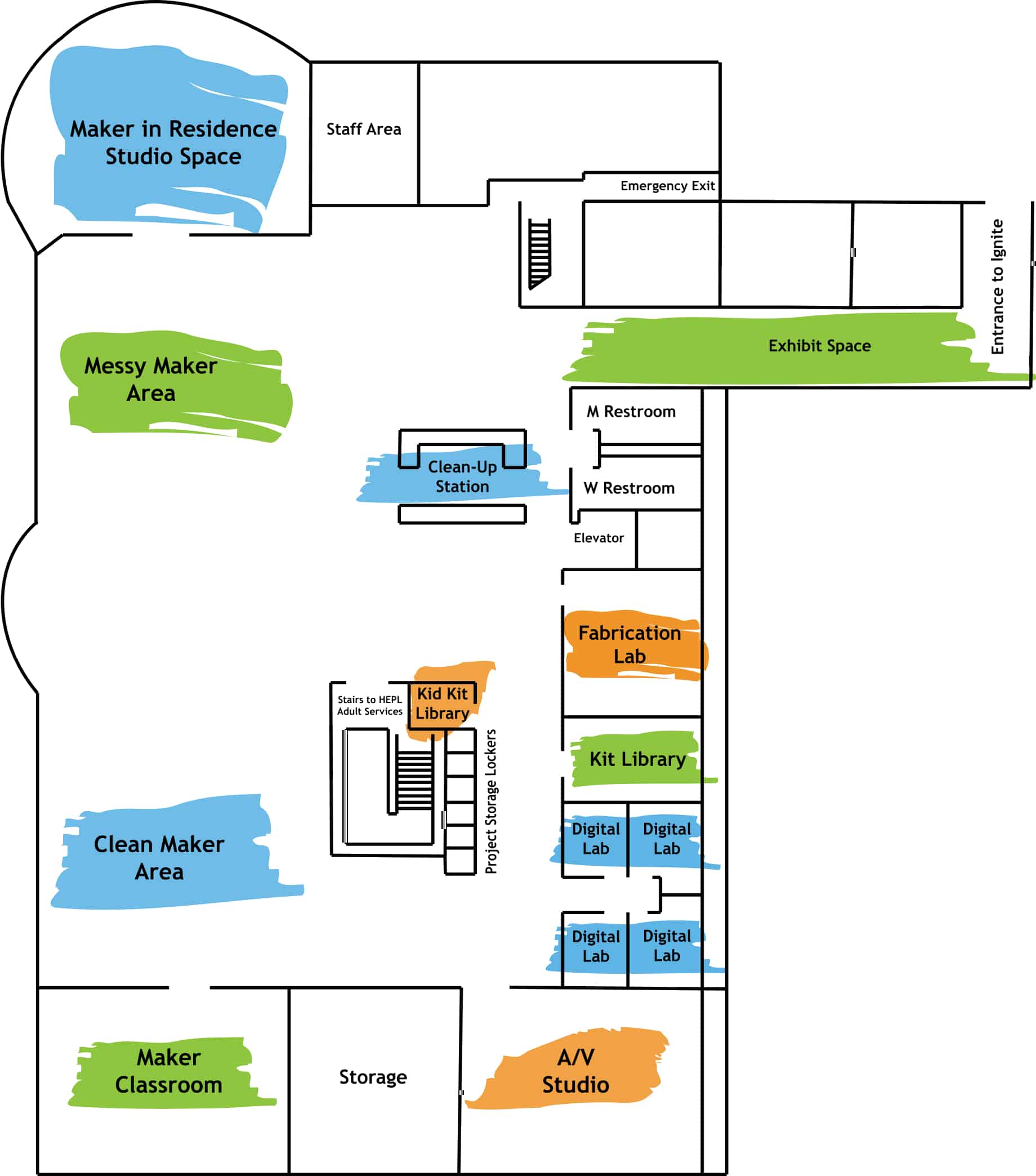by Katie W.
Hello makers! When you check out one of our acrylic paint kits to make a painting you have a variety of paint color choices. Using those colors straight out of the tube is always an option, but being able to incorporate a wider array of colors into your paintings will elevate your pieces to a new level. Color mixing is essential for any painter, and knowing color mixing basics will allow you to create any color, tint, or shade! It is also a great skill for saving money and time, as it allows you to avoid buying a tube of every single color. You can also mix your own custom colors when you only need a small amount.
It may seem daunting at first, but with these simple color mixing techniques and an basic understanding of the color wheel, creating new colors is as easy as can be! The steps below will teach you how to mix any color, even black, using just red, yellow, blue, and white.
The Primary Colors
First, let’s introduce our primary colors: red, yellow, and blue. These colors (and white) cannot be made by mixing other colors. However, all the other colors on the color wheel can be made by mixing either two or three of these primaries. I am using paint from our acrylic paint kits and a palette knife to mix the colors together on a palette.
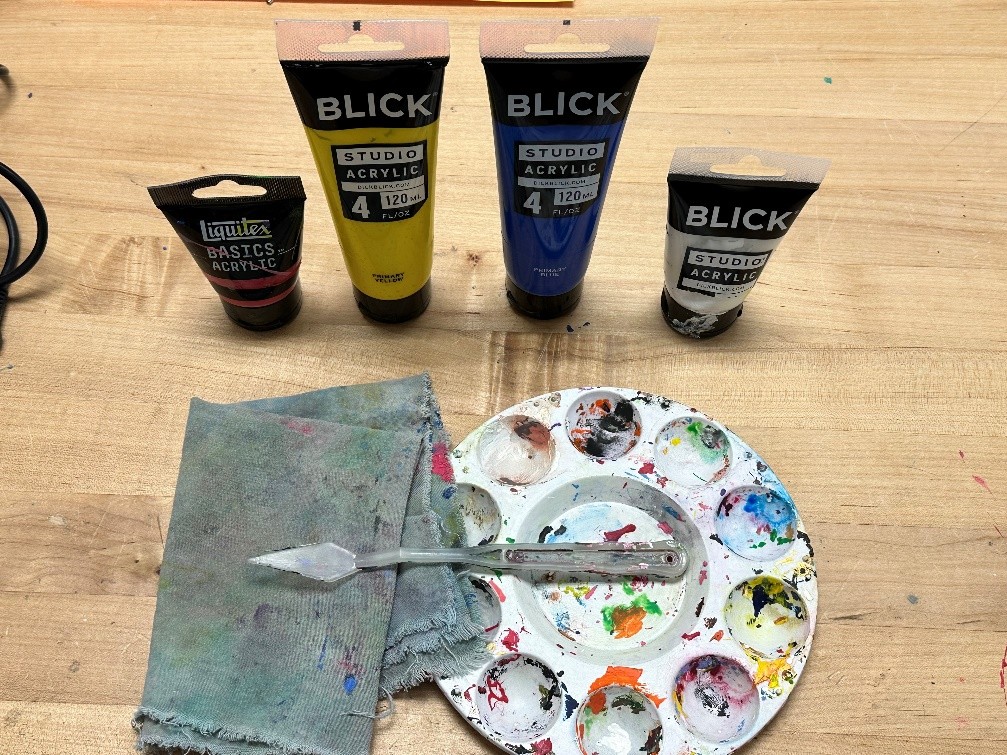
The Secondary and Tertiary Colors
Two primary colors can be mixed together to create secondary colors. The secondary colors are orange, green and purple.
- Red + Yellow = Orange
- Yellow + Blue = Green
- Red + Blue = Purple
There are also variations of secondary colors called tertiary colors, like red-orange, yellow-orange, yellow-green, blue-green, red-purple, and blue-purple. Tertiary colors are secondary colors that have more of one primary color than the other. For example, if you wanted to make red-orange you would add more red than yellow. If you wanted yellow-orange instead, you would add more yellow than red.
Below is a picture of the ratios I used of each primary color to create the full scale of tertiary colors.

Unmixed paint ratios

Paint mixed together
There are an infinite number of colors besides the basic tertiary colors, which you can create and customize by adding more or less of the primary colors involved.
Making Browns and Blacks
Before reading this blog you may have thought that browns and blacks had to be purchased, but I will show you that making these darks is almost as easy as making any other color! Making brown and black have similar processes, just with different amounts of the primary colors.
To make brown start your yellow paint. Then, add about half as much red paint as you did yellow. Lastly, add about half as much blue paint as you did red. Mixed together these will make a brown. If this brown isn’t the exact color you want, you can add more or less of the primary colors involved to change how it looks. To make a yellow-brown, you may need to add more yellow to the mix; to make a reddish-brown, you may need to add more red; and to make a darker, more purplish brown, add a little more blue. Keep adding a primary color or two until you get the brown you want.
To make black, start with blue paint. Then, add about half as much red paint to your palette as you did blue. Lastly, add about half as much yellow paint as red. If your black is looking a little too brown, try adding more blue and red paint. Mixing your own black instead of using black paint straight from a bottle can add a lot of depth to your paintings. Also, when mixing black into other colors to create shades, mixed blacks will blend better and provide a richer, bluer, shade.
Tip: When buying black paint tubes, you will see different names on the tubes that all have different uses. Mars Black is the only “true” black, and should be used when you don’t want any kind of blue or brown undertone. However, when mixed with other colors, Mars Black can cause de-saturation. Ivory Black is more transparent with a warmer brown undertone which makes it better for mixing and developing new shades.
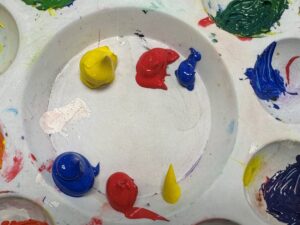
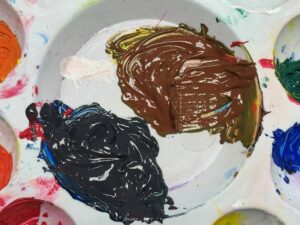
Now we have made all of these lovely colors on our palette from just the three primaries!
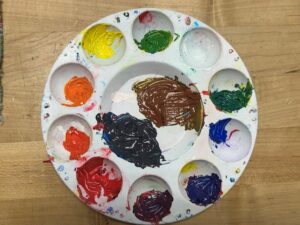
Shades and Tints
Shades are created by adding black, or another darker color, to an existing color. Tints are created by adding white to an existing color.
Below is an example of how shades and tints work. On the right, I mixed black with red to make a darker shade of red. On the left, I mixed white with red to make a lighter tint of red (also known as pink!). The more black or white you add to a color, the darker or lighter it will become.
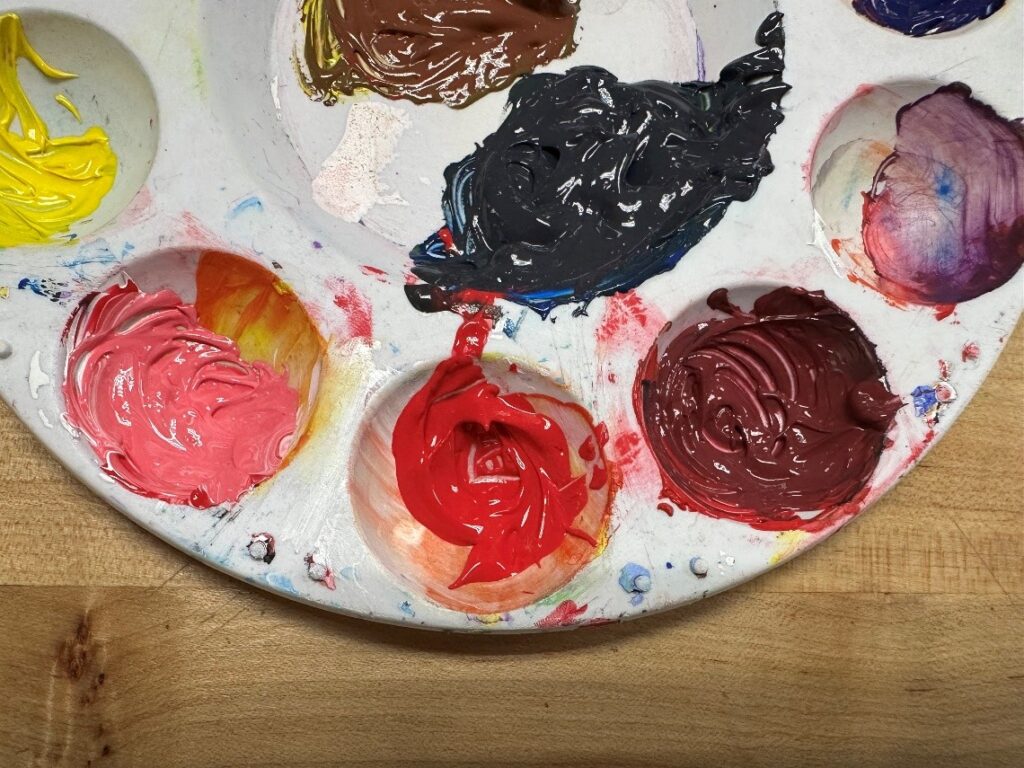
Tip: Gray is a tint of black. Create it by mixing white and black together.
Now you have learned how to mix any color using just red, yellow, blue, and white. There’s a lot of information in this blog, but thankfully there’s an easy way to remember most of it! Looking at a color wheel can help you figure out which colors you need to mix to make another color. It can also help you determine which colors go well together, contrast each other, or are part of the same value family. Don’t forget to post your painting creations to the Ignite Community Discussion Board on Facebook. Happy Making!


